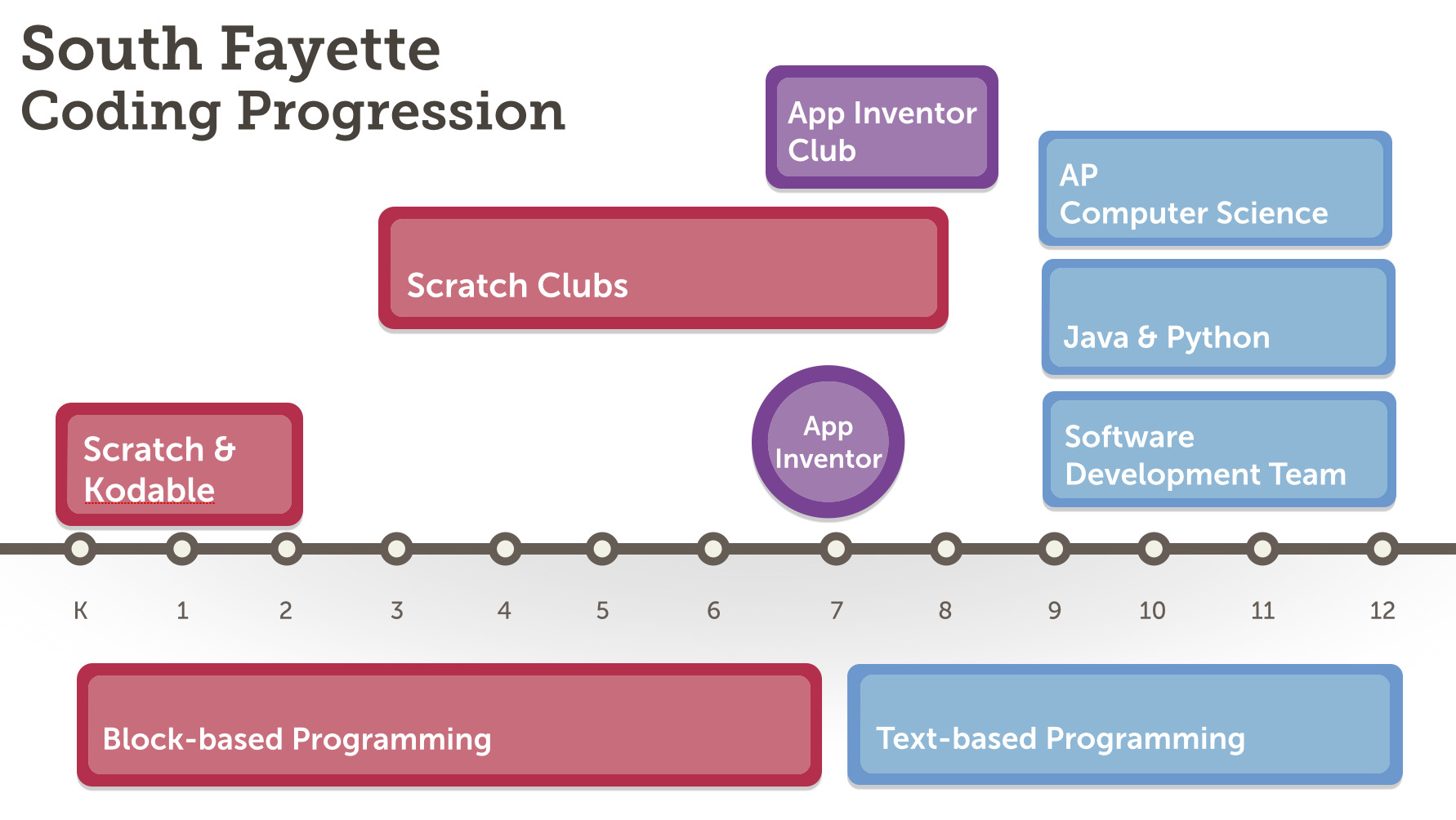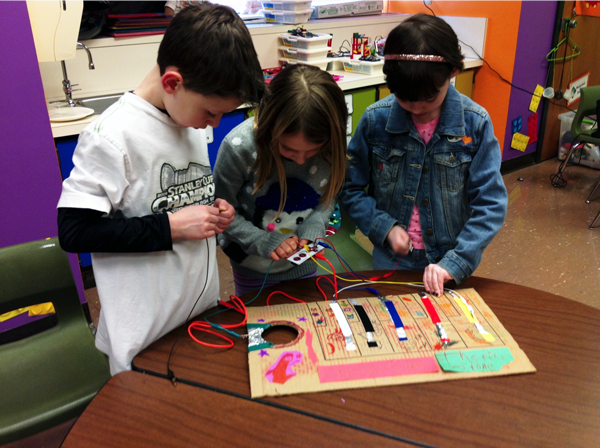
“It happened one fateful rainy day” sounds more like the start of a romantic comedy than that of an ed-tech transformation. But in South Fayette Township School District, Pa., that’s how an after-school program for technology and arts eventually became a national model for incorporating computational thinking into a K-12 curriculum.
Computational thinking is typically associated with coding and computer programming, but it’s also more than that, involving “solving problems, designing systems, and understanding human behavior,” according to Carnegie Mellon University.
These are important skills in a technology-driven world, whether you want to become a programmer or not. Many schools around the country offer after-school programs or electives for students interested in computational thinking. In South Fayette, a suburban and rural district of 2,700 students near Pittsburgh, it’s woven into the district culture, as well as the core curriculum at every grade level.

Students start with block-based code in early elementary, before transitioning to text-based code in middle school, where they can start to develop their own apps. By high school, students use these skills in courses including entrepreneurship and Advanced Placement computer science.
It started when Aileen Owens, South Fayette’s Director of Technology and Innovation, joined the district in 2010.
When she arrived, Owens met Frank Kruth, a middle school science teacher who led an after-school STEAM program for eight girls. One day, the team’s plan to launch rockets was derailed by rain. As an alternative, Kruth invited Owens to come in and teach Scratch, a program that allows students to learn computer coding while creating interactive stories, games, and animations. That one lesson turned into many as the students became increasingly enthusiastic and knowledgeable about coding – so much so that they were invited to teach the program to educators at a regional ed-tech conference.

This “eureka” moment motivated Owens and Kruth to teach educators, students and their families the basics of Scratch. Owens helped start new after-school programs for grades 3-5 – with middle school students as teaching assistants – and a middle school art teacher began incorporating design thinking into art classes.
Owens’ passion for computer science stems from her experience as a parent. When her son Andrew was younger, he loved video games, building tree houses, and making forts, but he was not engaged with school.
Frustrated with the pathways available through the school curriculum, Owens helped create extracurricular programs with local architects, archeologists, web designers, filmmakers and others. More than 400 students eventually participated and it’s through this opportunity, along with a particularly dedicated student teacher, that Andrew developed a love for computer programming. He is currently finishing a Ph.D. in computer science at M.I.T.
“I became convinced that our schools were missing an important literacy – computational thinking,” said Owens. “When I was fortunate enough to be given the opportunity to work for South Fayette School District, I was able to bring my passion into my work and set out to create a clear pathway K-12 for all students; to create the innovators of tomorrow.”
Now, in South Fayette, Owens is working to incorporate these concepts at every grade level and in every subject, during the school day.
“Every year, we embed more computational thinking in K-12.”
Aileen Owens, South Fayette Township School District
For instance, in elementary physical education class, students learn block-based coding. How? One student hops on the climbing rock wall while another “programs” her to the destination, with directions of “move two blocks left” or “one block up.” It teaches students logic and how processes guide much of the world.
Elsewhere in elementary school, students used Arduino boards to create their own working keyboard out of cardboard and electrical tape. They use a block-based coding program to operate Legos. In middle school, students move on to text-based programming and can actually create their own apps – like a quiz game about the NBA, for example – in MIT App Inventor.
Most of the projects happen in a “learning lab,” which operates like a traditional library or computer room. Teachers bring their classes into the lab about once a week to conduct lessons that incorporate computational thinking into core subjects.
At the upper levels, students take courses in computer-assisted design and learn programming languages at their own pace with Codecademy. A few high school students created an after-school coding class for other students. Another group created an educational app that they are beta testing in South Fayette elementary schools.
“It’s not the technology that we’re teaching through this; it’s the thought process,” Owens said. “We’re teaching students to think algorithmically, recursively, logically.”
It’s fitting that this all started with an after-school program for girls. Diversity and gender equity is important to South Fayette as it promotes STEAM skills and careers. An internal survey showed nearly 90 percent of students, including both boys and girls, who were introduced to programming at the elementary level cite a love of making, building, and designing, and want more challenges in programming, Owens said.
Sara, a seventh grader in South Fayette, recently described how she enjoys a sense of accomplishment from problem solving through coding:
See how this district incorporates computer science at every level: https://t.co/atTB5X0Sfe #edtech #edchat pic.twitter.com/iO23iacP0m
— Digital Promise (@DigitalPromise) September 7, 2015